Manticore
RETIRED MOD

- Joined
- Jan 18, 2009
- Messages
- 10,115
- Reaction score
- 114
- Country
- Location
What is Stealth Technology?
Stealth or low observability (as it is scientifically known) is one of the most misunderstood and misinterpreted concepts in military aviation by the common man. Stealth aircraft are considered as invisible aircraft, which dominate the skies. With an additional boost from Hollywood action movies, stealth is today termed as the concept invincibility rather than invisibility. Though, the debate still continues on whether stealth technology can make an aircraft invincible it was found that stealth aircraft are detectable by radar.
The motive behind incorporating stealth technology in an aircraft is not just to avoid missiles being fired at is but also to give total deniability to covert operations. This is very much useful to strike targets where it is impossible to reach. Thus we can clearly say that the job of a stealth aircraft pilot is not to let others know that he was ever there.
What is Stealth?
In simple terms, stealth technology allows an aircraft to be partially invisible to Radar or any other means of detection. This doesn't allow the aircraft to be fully invisible on radar. Stealth technology cannot make the aircraft invisible to enemy or friendly radar. All it can do is to reduce the detection range or an aircraft. This is similar to the camouflage tactics used by soldiers in jungle warfare. Unless the soldier comes near you, you can't see him. Though this gives a clear and safe striking distance for the aircraft, there is still a threat from radar systems, which can detect stealth aircraft.
The Russian 1R13 radar system is very much capable of detecting the F-117 "Night Hawk" stealth fighter. There are also some other radar systems made in other countries, which are capable of detecting the F-117. Duringhttp://www.totalairdominance.50megs.com the Gulf war the Iraqis were able to detect the F-117 but failed to eliminate its threat because of lack of coordination. The most unforgettable incident involving the detection and elimination of a stealth aircraft was during the NATO air-war over Yugoslavia. This was done by a Russian built "not so advanced" SAM (possibly the SA-3 or SA-6). The SAM system presumably used optical detection for target acquisition in the case.
How does Stealth technology work?
The concept behind the stealth technology is very simple. As a matter of fact it is totally the principle of reflection and absorption that makes aircraft "stealthy". Deflecting the incoming radar waves into another direction and thus reducing the number of waves does this, which returns to the radar. Another concept that is followed is to absorb the incoming radar waves totally and to redirect the absorbed electromagnetic energy in another direction. What ever may be the method used, the level of stealth an aircraft can achieve depends totally on the design and the substance with which it is made of.
RAS
RAS or Radar absorbent surfaces are the surfaces on the aircraft, which can deflect the incoming radar waves and reduce the detection range. RAS works due to the angles at which the structures on the aircraft's fuselage or the fuselage itself are placed. These structures can be anything from wings to a refueling boom on the aircraft. The extensive use of RAS is clearly visible in the F-117 "Night Hawk". Due to the facets (as they are called) on the fuselage, most of the incoming radar waves are reflected to another direction. Due to these facets on the fuselage, the F-117 is a very unstable aircraft.
The concept behind the RAS is that of reflecting a light beam from a torch with a mirror. The angle at which the reflection takes place is also more important. When we consider a mirror being rotated from 0o to 90o, the amount of light that is reflected in the direction of the light beam is more. At 90o, maximum amount of light that is reflected back to same direction as the light beam's source. On the other hand when the mirror is tilted above 90o and as it proceeds to 180o, the amount of light reflected in the same direction decreases drastically. This makes the aircraft like F-117 stealthy.
RAM
Radar absorbent surfaces absorb the incoming radar waves rather than deflecting it in another direction. RAS totally depends on the material with which the surface of the aircraft is made. Though the composition of this material is a top secret. The F-117 extensively uses RAM to reduce its radar signature or its radar cross section.
The RAS is believed to be silicon based inorganic compound. This is assumed by the information that the RAM coating on the B-2 is not waterphttp://www.totalairdominance.50megs.comroof. This is just a supposition and may not be true. What we know is that the RAM coating over the B-2 is placed like wrapping a cloth over the plane. When radar sends a beam in the direction of the B-2, the radar waves are absorbed by the plane's surface and is redirected to another direction after it is absorbed. This reduces the radar signature of the aircraft.
IR
Another important factor that influences the stealth capability of an aircraft is the IR (infrared) signature given out by the plane. Usually planes are visible in thermal imaging systems because of the high temperature exhaust they give out. This is a great disadvantage to stealth aircraft as missiles also have IR guidance system. The IR signatures of stealth aircraft are minute when compared to the signature of a conventional fighter or any other military aircraft.
If reducing the radar signature of an aircraft is tough, then reducing the IR signature of the aircraft is tougher. It will be like flying a plane with no engines. The reduced IR signature totally depends on the engine and where the engine is placed in an aircraft.
Engines for stealth aircraft are specifically built to have a very low IR signature. The technology behind this is top secret like others in stealth aircraft. Another main aspect that reduces the IR signature of a stealth aircraft is to place the engines deep into the fuselage. This is done in stealth aircraft like the B-2, F-22 and the JSF. The IR reduction scheme used in F-117 is very much different from the others. The engines are placed deep within the aircraft like any stealth aircraft and at the outlet, a section of the fuselage deflects the exhaust to another direction. This is useful for deflecting the hot exhaust gases in another direction.
Methods of avoiding detection
There are some more methods by which planes can avoid detection. These methods do not need any hi-tech equipment to avoid detection. Some of them have been used for years together by pilots to avoid detection.
One of the main efforts taken by designers of the stealth aircraft of today is to carry the weapons payload of the aircraft internally. This has shown that carrying weapons internally can considerably decrease the radar cross-section of the aircraft. Bombs and Missiles have a tendency to reflect the incoming radar waves to a higher extent. Providing missiles with RAM and RAS is an impossible by the cost of these things. Thus the missiles are carried in internal bombays which are opened only when the weapons are released.
Aircraft has used another method of avoiding detection for a very long time. Radars can use the radar waves or electro-magnetic energy of planes radar and locate it. An aircraft can remain undetected just by turning the radar off.
In case of some of the modern stealth aircraft, it uses its wingman in tandem to track its target and destroy it. It is done in the following way. The fighter, which is going to attack moves forward, the wingman (the second aircraft) on the other hand remains at a safe distance from the target which the other fighter is approaching. The wingman provides the other fighter with the radar location of the enemy aircraft by a secured IFDL (In Flight Data Link). Thus the enemy radar is only able to detect the wingman while the attacking fighter approaches the enemy without making any sharp turns. This is done not to make any sudden variations in a stealth aircraft's radar signature. Thus the fighter, who moves forward, is able to attack the enemy without being detected.
Plasma Stealth
Plasma stealth technology is what can be called as "Active stealth technology" in scientific terms. This technology was first developed by the Russians. It is a milestone in the field of stealth technology. The technology behind this not at all new. The plasma thrust technology was used in the Soviet / Russian space program. Later the same engine was used to power the American Deep Space 1 probe.
In plasma stealth, the aircraft injects a stream of plasma in front of the aircraft. The plasma will cover the entire body of the fighter and will absorb most of the electromagnetic energy of the radar waves, thus making the aircraft difficult to detect. The same method is used in Magneto Hydro Dynamics. Using Magneto Hydro Dynamics, an aircraft can propel itself to great speeds.
Plasma stealth will be incorporated in the MiG-35 "Super Fulcrum / Raptor Killer". This is a fighter which is an advanced derivative of the MiG-29 "Fulcrhttp://www.totalairdominance.50megs.comum / Baaz". Initial trials have been conducted on this technology, but most of the results have proved to be fruitful.
Detection methods for stealth aircraft
Whenever a technology is developed for military purposes, another technology is also developed to counter that technology. There are strong efforts to develop a system that can counter the low obervability of the fifth generation stealth aircraft. There are ways of detection and elimination of a low observable aircraft but this doesn't give a 100% success rage at present.
On a radar screen, aircraft will have their radar cross sections with respect to their size. This helps the radar to identify that the radar contact it has made is an aircraft. Conventional aircraft are visible on the radar screen because of its relative size. On the other hand, the relative size of a stealth aircraft on the radar screen will be that of a large bird. This is how stealth aircraft are ignored by radar and thus detection is avoided.
A proven method to detect and destroy stealth aircraft is to triangulate its location with a network of radar systems. This was done while the F-117 was shot down during the NATO offensive over Yugoslavia.
A new method of detecting low observable aircraft is just over the horizon. Scientists have found a method to detect stealth aircraft with the help of microwaves similar to the ones emitted by the cell phone towers. Nothing much is known about this technology, but the US military seems to be very keen about doing more research on this.
Disadvantages of stealth technology
Stealth technology has its own disadvantages like other technologies. Stealth aircraft cannot fly as fast or is not maneuverable like conventional aircraft. The F-22 and the aircraft of its category proved this wrong up to an extent. Though the F-22 may be fast or maneuverable or fast, it can't go beyond Mach 2 and cannot make turns like the Su-37.
Another serious disadvantage with the stealth aircraft is the reduced amount of payload it can carry. As most of the payload is carried internally in a stealth aircraft to reduce the radar signature, weapons can only occupy a less amount of space internally. On the other hand a conventional aircraft can carry much more payload than any stealth aircraft of its class.
Whatever may be the disadvantage a stealth aircraft can have, the biggest of all disadvantages that it faces is its sheer cost. Stealth aircraft literally costs its weight in gold. Fighters in service and in development for the USAF like the B-2 ($2 billion), F-117 ($70 million) and the F-22 ($100 million) are the costliest planes in the world. After the cold war, the number of B-2 bombers was reduced sharply because of its staggering price tag and maintenance charges. There is a possible solution for this problem. In the recent past the Russian design firms Sukhoi and Mikhoyan Gurevich (MiG) have developed fighters which will have a price tag similar to that of the Su-30MKI. This can be a positive step to make stealth technology affordable for third world countries.
Stealth aircraft of yesteryears, today and tomorrow
Stealth technology is a concept that is not at all new. During the Second World War, allied aircraft used tin and aluminum foils in huge numbers to confuse German radar installations. This acted as a cover for allied bombers to conduct air raids. This method was later used as chaffs by aircrafts to dodge radar guided missiles.
The first stealth aircraft was the F-117 developed by Lockheed Martin. It was a top-secret project developed by its Skunk Works unit. The F-117 was only revealed during the late 80s and then saw action in the Persian Gulf.
In due course of time the B-2 was developed as a successor to the B-2. Though both of them serve different purposes, the B-2 went a step ahead of the F-117. The B-2 was developed to deliver nuclear weapons and other guided and unguided bombs. On the other hand the F-117 was developed to deliver its precision laser guided bombs.
Another stealth aircraft, which made a lot of promises and in the end ended up in a trashcan, was the A-12. It was a fighter that was designed to replace the F-14 and F-18 in the future. The capabilities of this aircraft were boasted to such an extent that the project ended up in a big mess. Billions of dollars were wasted for nothing.
Stealth technology became famous with the ATF contest. The Boeing-Lockheed YF-22 and the McDonell Douglas-Grumman YF-23 fought for the milti-billion contract to build the fighter that would take the USAF into the fifth generation fighter era. The Boeing-Lockheed won the contract and the F-22 was approved to be the replacement for the F-15 "Eagle" interceptor.
America now has a competitors, Russia decided to respond to the development of the F-22 by making the Su-47 (S-37) "Berkut" and the MiG-35 "Super Fulcrum / Raptor Killer". These fighters were developed by the two leading aviation firms in Russia Sukhoi and Mikhoyan Gurevich (MiG). The future of these projects totally depends on the funding which will be provided to the Russian defense sector. There are some hopes of increase in the funding to these projects as countries like India have started providing funds and technical assistance for these projects.
Another competition that soon came into the spotlight after the ATF competition was the JSF. This time Boeing developed the X-32 and the Lockheed martinhttp://www.totalairdominance.50megs.com its X-35. With the experience gained from developing the F-22, they were tasked with making a replacement for the F-16. This saw great technological advances, as they had to make the first operational supersonic VSOL aircraft. Lockheed martin took the technical assistance of Russian scientists who developed the Yak-141. The Yak-141 is the first supersonic VSTOL aircraft. In the end the Lockheed team with its X-35 won the contract and the fighter was re-designated as the F-35.
Many projects remain over the horizon that will use stealth technology as its primary capability. They come from some of the most unlikely contenders. These projects include the Euro JSF, which will be designed by the team that developed the EF-2000. Russia is stepping forward with its LFS project with the S-54 and other designs. Two new entries into this field will be India and China. India will be introducing its MCA, which is a twin engine fighter without vertical stabilizers. This fighter will use thrust vectoring instead of rudders. China will be introducing the J-12 (F-12/XXJ). This http://www.totalairdominance.50megs.comis a fighter that is similar to the F-22.
Future of stealth technology
Stealth technology is clearly the future of air combat. In the future, as air defense systems grow more accurate and deadly, stealth technology can be a factor for a decisive by a country over the other. In the future, stealth technology will not only be incorporated in fighters and bombers but also in ships, helicopters, tanks and transport planes. These are evident from the RAH-66 "Comanche" and the Sea Shadow stealthttp://www.totalairdominance.50megs.comh ship. Ever since the Wright brothers flew the first powered flight, the advancements in this particular field of technology has seen staggering heights. Stealth technology is just one of the advancements that we have seen. In due course of time we can see many improvements in the field of military aviation which would one-day even make stealth technology obsolete
.::What is Stealth Technology?::.
Stealth or low observability (as it is scientifically known) is one of the most misunderstood and misinterpreted concepts in military aviation by the common man. Stealth aircraft are considered as invisible aircraft, which dominate the skies. With an additional boost from Hollywood action movies, stealth is today termed as the concept invincibility rather than invisibility. Though, the debate still continues on whether stealth technology can make an aircraft invincible it was found that stealth aircraft are detectable by radar.
The motive behind incorporating stealth technology in an aircraft is not just to avoid missiles being fired at is but also to give total deniability to covert operations. This is very much useful to strike targets where it is impossible to reach. Thus we can clearly say that the job of a stealth aircraft pilot is not to let others know that he was ever there.
What is Stealth?
In simple terms, stealth technology allows an aircraft to be partially invisible to Radar or any other means of detection. This doesn't allow the aircraft to be fully invisible on radar. Stealth technology cannot make the aircraft invisible to enemy or friendly radar. All it can do is to reduce the detection range or an aircraft. This is similar to the camouflage tactics used by soldiers in jungle warfare. Unless the soldier comes near you, you can't see him. Though this gives a clear and safe striking distance for the aircraft, there is still a threat from radar systems, which can detect stealth aircraft.
The Russian 1R13 radar system is very much capable of detecting the F-117 "Night Hawk" stealth fighter. There are also some other radar systems made in other countries, which are capable of detecting the F-117. Duringhttp://www.totalairdominance.50megs.com the Gulf war the Iraqis were able to detect the F-117 but failed to eliminate its threat because of lack of coordination. The most unforgettable incident involving the detection and elimination of a stealth aircraft was during the NATO air-war over Yugoslavia. This was done by a Russian built "not so advanced" SAM (possibly the SA-3 or SA-6). The SAM system presumably used optical detection for target acquisition in the case.
How does Stealth technology work?
The concept behind the stealth technology is very simple. As a matter of fact it is totally the principle of reflection and absorption that makes aircraft "stealthy". Deflecting the incoming radar waves into another direction and thus reducing the number of waves does this, which returns to the radar. Another concept that is followed is to absorb the incoming radar waves totally and to redirect the absorbed electromagnetic energy in another direction. What ever may be the method used, the level of stealth an aircraft can achieve depends totally on the design and the substance with which it is made of.
RAS
RAS or Radar absorbent surfaces are the surfaces on the aircraft, which can deflect the incoming radar waves and reduce the detection range. RAS works due to the angles at which the structures on the aircraft's fuselage or the fuselage itself are placed. These structures can be anything from wings to a refueling boom on the aircraft. The extensive use of RAS is clearly visible in the F-117 "Night Hawk". Due to the facets (as they are called) on the fuselage, most of the incoming radar waves are reflected to another direction. Due to these facets on the fuselage, the F-117 is a very unstable aircraft.
The concept behind the RAS is that of reflecting a light beam from a torch with a mirror. The angle at which the reflection takes place is also more important. When we consider a mirror being rotated from 0o to 90o, the amount of light that is reflected in the direction of the light beam is more. At 90o, maximum amount of light that is reflected back to same direction as the light beam's source. On the other hand when the mirror is tilted above 90o and as it proceeds to 180o, the amount of light reflected in the same direction decreases drastically. This makes the aircraft like F-117 stealthy.
RAM
Radar absorbent surfaces absorb the incoming radar waves rather than deflecting it in another direction. RAS totally depends on the material with which the surface of the aircraft is made. Though the composition of this material is a top secret. The F-117 extensively uses RAM to reduce its radar signature or its radar cross section.
The RAS is believed to be silicon based inorganic compound. This is assumed by the information that the RAM coating on the B-2 is not waterphttp://www.totalairdominance.50megs.comroof. This is just a supposition and may not be true. What we know is that the RAM coating over the B-2 is placed like wrapping a cloth over the plane. When radar sends a beam in the direction of the B-2, the radar waves are absorbed by the plane's surface and is redirected to another direction after it is absorbed. This reduces the radar signature of the aircraft.
IR
Another important factor that influences the stealth capability of an aircraft is the IR (infrared) signature given out by the plane. Usually planes are visible in thermal imaging systems because of the high temperature exhaust they give out. This is a great disadvantage to stealth aircraft as missiles also have IR guidance system. The IR signatures of stealth aircraft are minute when compared to the signature of a conventional fighter or any other military aircraft.
If reducing the radar signature of an aircraft is tough, then reducing the IR signature of the aircraft is tougher. It will be like flying a plane with no engines. The reduced IR signature totally depends on the engine and where the engine is placed in an aircraft.
Engines for stealth aircraft are specifically built to have a very low IR signature. The technology behind this is top secret like others in stealth aircraft. Another main aspect that reduces the IR signature of a stealth aircraft is to place the engines deep into the fuselage. This is done in stealth aircraft like the B-2, F-22 and the JSF. The IR reduction scheme used in F-117 is very much different from the others. The engines are placed deep within the aircraft like any stealth aircraft and at the outlet, a section of the fuselage deflects the exhaust to another direction. This is useful for deflecting the hot exhaust gases in another direction.
Methods of avoiding detection
There are some more methods by which planes can avoid detection. These methods do not need any hi-tech equipment to avoid detection. Some of them have been used for years together by pilots to avoid detection.
One of the main efforts taken by designers of the stealth aircraft of today is to carry the weapons payload of the aircraft internally. This has shown that carrying weapons internally can considerably decrease the radar cross-section of the aircraft. Bombs and Missiles have a tendency to reflect the incoming radar waves to a higher extent. Providing missiles with RAM and RAS is an impossible by the cost of these things. Thus the missiles are carried in internal bombays which are opened only when the weapons are released.
Aircraft has used another method of avoiding detection for a very long time. Radars can use the radar waves or electro-magnetic energy of planes radar and locate it. An aircraft can remain undetected just by turning the radar off.
In case of some of the modern stealth aircraft, it uses its wingman in tandem to track its target and destroy it. It is done in the following way. The fighter, which is going to attack moves forward, the wingman (the second aircraft) on the other hand remains at a safe distance from the target which the other fighter is approaching. The wingman provides the other fighter with the radar location of the enemy aircraft by a secured IFDL (In Flight Data Link). Thus the enemy radar is only able to detect the wingman while the attacking fighter approaches the enemy without making any sharp turns. This is done not to make any sudden variations in a stealth aircraft's radar signature. Thus the fighter, who moves forward, is able to attack the enemy without being detected.
Plasma Stealth
Plasma stealth technology is what can be called as "Active stealth technology" in scientific terms. This technology was first developed by the Russians. It is a milestone in the field of stealth technology. The technology behind this not at all new. The plasma thrust technology was used in the Soviet / Russian space program. Later the same engine was used to power the American Deep Space 1 probe.
In plasma stealth, the aircraft injects a stream of plasma in front of the aircraft. The plasma will cover the entire body of the fighter and will absorb most of the electromagnetic energy of the radar waves, thus making the aircraft difficult to detect. The same method is used in Magneto Hydro Dynamics. Using Magneto Hydro Dynamics, an aircraft can propel itself to great speeds.
Plasma stealth will be incorporated in the MiG-35 "Super Fulcrum / Raptor Killer". This is a fighter which is an advanced derivative of the MiG-29 "Fulcrhttp://www.totalairdominance.50megs.comum / Baaz". Initial trials have been conducted on this technology, but most of the results have proved to be fruitful.
Detection methods for stealth aircraft
Whenever a technology is developed for military purposes, another technology is also developed to counter that technology. There are strong efforts to develop a system that can counter the low obervability of the fifth generation stealth aircraft. There are ways of detection and elimination of a low observable aircraft but this doesn't give a 100% success rage at present.
On a radar screen, aircraft will have their radar cross sections with respect to their size. This helps the radar to identify that the radar contact it has made is an aircraft. Conventional aircraft are visible on the radar screen because of its relative size. On the other hand, the relative size of a stealth aircraft on the radar screen will be that of a large bird. This is how stealth aircraft are ignored by radar and thus detection is avoided.
A proven method to detect and destroy stealth aircraft is to triangulate its location with a network of radar systems. This was done while the F-117 was shot down during the NATO offensive over Yugoslavia.
A new method of detecting low observable aircraft is just over the horizon. Scientists have found a method to detect stealth aircraft with the help of microwaves similar to the ones emitted by the cell phone towers. Nothing much is known about this technology, but the US military seems to be very keen about doing more research on this.
Disadvantages of stealth technology
Stealth technology has its own disadvantages like other technologies. Stealth aircraft cannot fly as fast or is not maneuverable like conventional aircraft. The F-22 and the aircraft of its category proved this wrong up to an extent. Though the F-22 may be fast or maneuverable or fast, it can't go beyond Mach 2 and cannot make turns like the Su-37.
Another serious disadvantage with the stealth aircraft is the reduced amount of payload it can carry. As most of the payload is carried internally in a stealth aircraft to reduce the radar signature, weapons can only occupy a less amount of space internally. On the other hand a conventional aircraft can carry much more payload than any stealth aircraft of its class.
Whatever may be the disadvantage a stealth aircraft can have, the biggest of all disadvantages that it faces is its sheer cost. Stealth aircraft literally costs its weight in gold. Fighters in service and in development for the USAF like the B-2 ($2 billion), F-117 ($70 million) and the F-22 ($100 million) are the costliest planes in the world. After the cold war, the number of B-2 bombers was reduced sharply because of its staggering price tag and maintenance charges. There is a possible solution for this problem. In the recent past the Russian design firms Sukhoi and Mikhoyan Gurevich (MiG) have developed fighters which will have a price tag similar to that of the Su-30MKI. This can be a positive step to make stealth technology affordable for third world countries.
Stealth aircraft of yesteryears, today and tomorrow
Stealth technology is a concept that is not at all new. During the Second World War, allied aircraft used tin and aluminum foils in huge numbers to confuse German radar installations. This acted as a cover for allied bombers to conduct air raids. This method was later used as chaffs by aircrafts to dodge radar guided missiles.
The first stealth aircraft was the F-117 developed by Lockheed Martin. It was a top-secret project developed by its Skunk Works unit. The F-117 was only revealed during the late 80s and then saw action in the Persian Gulf.
In due course of time the B-2 was developed as a successor to the B-2. Though both of them serve different purposes, the B-2 went a step ahead of the F-117. The B-2 was developed to deliver nuclear weapons and other guided and unguided bombs. On the other hand the F-117 was developed to deliver its precision laser guided bombs.
Another stealth aircraft, which made a lot of promises and in the end ended up in a trashcan, was the A-12. It was a fighter that was designed to replace the F-14 and F-18 in the future. The capabilities of this aircraft were boasted to such an extent that the project ended up in a big mess. Billions of dollars were wasted for nothing.
Stealth technology became famous with the ATF contest. The Boeing-Lockheed YF-22 and the McDonell Douglas-Grumman YF-23 fought for the milti-billion contract to build the fighter that would take the USAF into the fifth generation fighter era. The Boeing-Lockheed won the contract and the F-22 was approved to be the replacement for the F-15 "Eagle" interceptor.
America now has a competitors, Russia decided to respond to the development of the F-22 by making the Su-47 (S-37) "Berkut" and the MiG-35 "Super Fulcrum / Raptor Killer". These fighters were developed by the two leading aviation firms in Russia Sukhoi and Mikhoyan Gurevich (MiG). The future of these projects totally depends on the funding which will be provided to the Russian defense sector. There are some hopes of increase in the funding to these projects as countries like India have started providing funds and technical assistance for these projects.
Another competition that soon came into the spotlight after the ATF competition was the JSF. This time Boeing developed the X-32 and the Lockheed martinhttp://www.totalairdominance.50megs.com its X-35. With the experience gained from developing the F-22, they were tasked with making a replacement for the F-16. This saw great technological advances, as they had to make the first operational supersonic VSOL aircraft. Lockheed martin took the technical assistance of Russian scientists who developed the Yak-141. The Yak-141 is the first supersonic VSTOL aircraft. In the end the Lockheed team with its X-35 won the contract and the fighter was re-designated as the F-35.
Many projects remain over the horizon that will use stealth technology as its primary capability. They come from some of the most unlikely contenders. These projects include the Euro JSF, which will be designed by the team that developed the EF-2000. Russia is stepping forward with its LFS project with the S-54 and other designs. Two new entries into this field will be India and China. India will be introducing its MCA, which is a twin engine fighter without vertical stabilizers. This fighter will use thrust vectoring instead of rudders. China will be introducing the J-12 (F-12/XXJ). This http://www.totalairdominance.50megs.comis a fighter that is similar to the F-22.
Future of stealth technology
Stealth technology is clearly the future of air combat. In the future, as air defense systems grow more accurate and deadly, stealth technology can be a factor for a decisive by a country over the other. In the future, stealth technology will not only be incorporated in fighters and bombers but also in ships, helicopters, tanks and transport planes. These are evident from the RAH-66 "Comanche" and the Sea Shadow stealthttp://www.totalairdominance.50megs.comh ship. Ever since the Wright brothers flew the first powered flight, the advancements in this particular field of technology has seen staggering heights. Stealth technology is just one of the advancements that we have seen. In due course of time we can see many improvements in the field of military aviation which would one-day even make stealth technology obsolete
.::What is Stealth Technology?::.










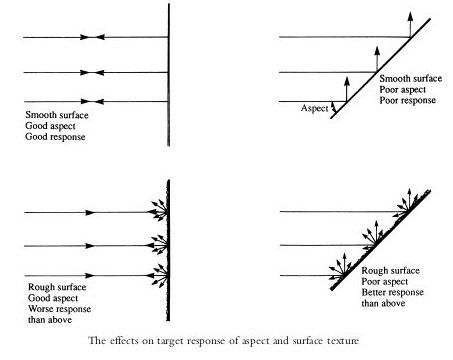
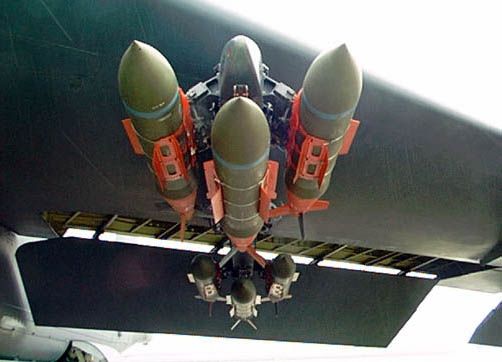




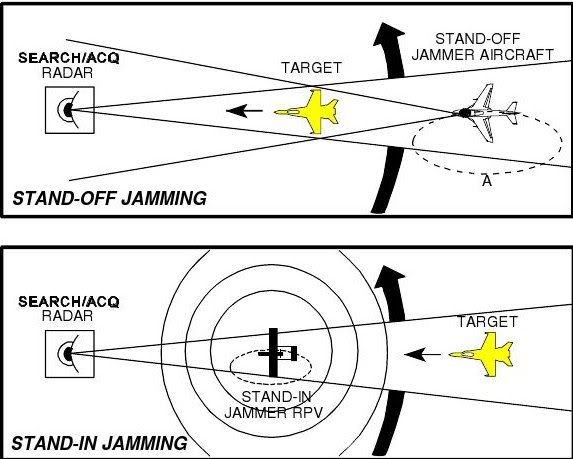
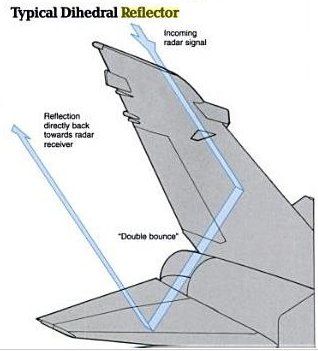

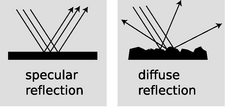





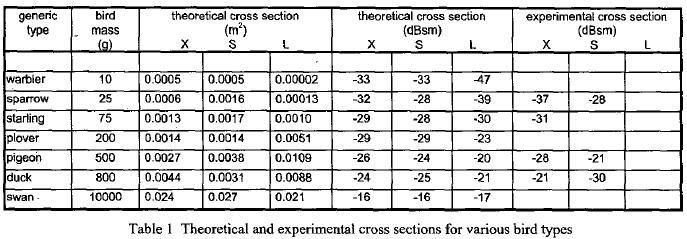


 ...The radar computer is essentially saying: 'What a moron this meatbag really is. I have to clear up so much crap just so the moron can understand what is in front of him.'
...The radar computer is essentially saying: 'What a moron this meatbag really is. I have to clear up so much crap just so the moron can understand what is in front of him.'


